APRIL 1, 2020
 Monday, March 30, 2020 at 12:03PM
Monday, March 30, 2020 at 12:03PM Editor's Note: Kudos to metro Detroit-based ad agency Doner for their new ad, ""When the Motor Stops," promoting the resilience and determination of the Motor City as it fights the COVID-19 pandemic. As reported by Julie Hinds in the Detroit Free Press, "the idea came from a young brand strategist, Alex DeMuth, (who said) 'Our agency can’t make ventilators or masks, but we can make content.'" The filming was done last Friday by one employee, who built a camera rig to fit on his car and drove through the city's deserted streets. He then edited it from home, while a copywriter recorded the narration from her closet. It is truly a great - and powerful - ad. -WG
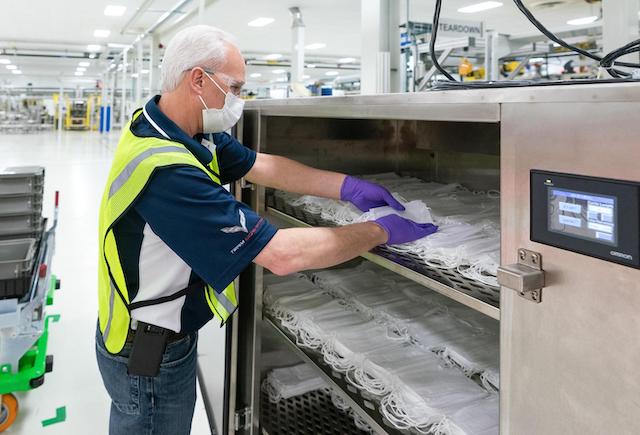
(GM)
As the COVID-19 pandemic spread across the country, it created a critical shortage of face masks. To help protect workers in essential services U.S., GM launched a rapid-response project to produce masks at scale on Friday, March 20. Seven days later, the team had produced their first sample on the new production line. By next week, GM expects to deliver its first 20,000 masks to frontline workers. Without help from GM’s partners around the globe, the project would have taken several months to plan and execute. The team working on GM’s face-mask project accomplished the task in just one week. At 2:30 p.m. on Friday, March 27, the project team had their first production-made mask in their hands. The projected production volume is just as aggressive as the project’s timeline. By Monday, March 30, more than 2,000 masks were produced by teams working through the weekend. These initial test samples will be used to ensure the quality standards are met. Once these quality measures are completed, the team expects to start producing masks for delivery early next week. GM and the UAW will seek more than two dozen paid volunteers from Detroit-area plants to staff mask operations. In addition, GM has implemented a series of safety measures to protect these team members through physical distancing, enhanced on-site cleaning and pre-entry health screening. The team expects to have 20,000 masks ready for delivery on Wednesday, April 8. Once the line is running at full speed, it will be able to produce up to 50,000 masks every day – or up to 1.5 million masks a month. GM is currently developing a plan for distributing the masks, including using some of this important safety equipment to protect employees in critical GM operations. (Ford)
(Ford)
Ford, in collaboration with GE Healthcare, will leverage the design of Airon Corp.’s FDA-cleared ventilator to produce in Michigan. With the full weight of the UAW behind the venture and the full power of Ford and GE Healthcare, production of the GE/Airon Model A-E ventilator is targeted to start the week of April 20 at Ford’s Rawsonville (Mich.) Components Plant. Ford expects to produce 50,000 of the ventilators within the next 100 days, with the ability to produce 30,000 a month thereafter as needed. The simplified ventilator design – licensed by GE Healthcare from Florida-based Airon Corp. – is responsive to the needs of most COVID-19 patients, and operates on air pressure without the need for electricity. This unique, go-fast initiative comes in addition to the previously announced program by Ford and GE Healthcare to increase production capacity of existing GE Healthcare ventilators
Editor-in-Chief's Note: Under Bill Mitchell's tutelage, GM did a lot of hot Corvair-based concepts. The first was the short-lived 1961 Corvair Sebring Spyder (in red), which was a mild custom, but it notably reflected Mitchell's love of open-top racing cars. That machine was followed by the 1962 Corvair Super Spyder concept, which was a dramatic departure from the production Corvair at the time. The Super Spyder (XP-785) was one of the most striking concepts from GM Styling during that era. Originally painted in Mitchell's favorite metallic silver (he loved the "Silver Arrow" Mercedes-Benz Grand Prix cars) the Super Spyder was a wild machine. It was shortened in length (171" vs. 180") and wheelbase (93" vs. 108") from the production Corvair (a 15" section was removed between the door and the rear wheel arches). The Super Spyder also bristled with race-oriented design details including a cut-down windscreen; aero mirrors; an aerodynamic headrest built into the long fiberglass rear deck; a split front bumper; racing capable headlights; three louvers ahead of each rear wheel; Halibrand alloy racing wheels with knockoff hubs; Corvette Sting Ray taillights and fabulous triple exhausts wrapping around each rear corner; a racing-oriented interior and it was equipped with a Paxton supercharger. This car remains stunning to this day, although it was subsequently repainted over the years (see below) to a different color. I accompanied Mitchell on a run up to the corner drugstore in this car; I will never forget it. Next week? The fantastic Corvair Monza GT and SS concepts from GM Styling. -PMD 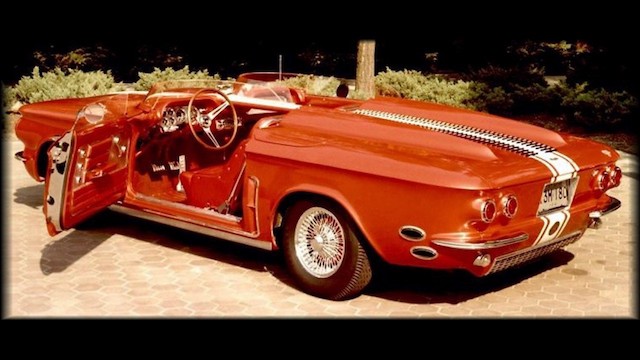 (GM images)
(GM images)
The 1961 Corvair Sebring Spyder.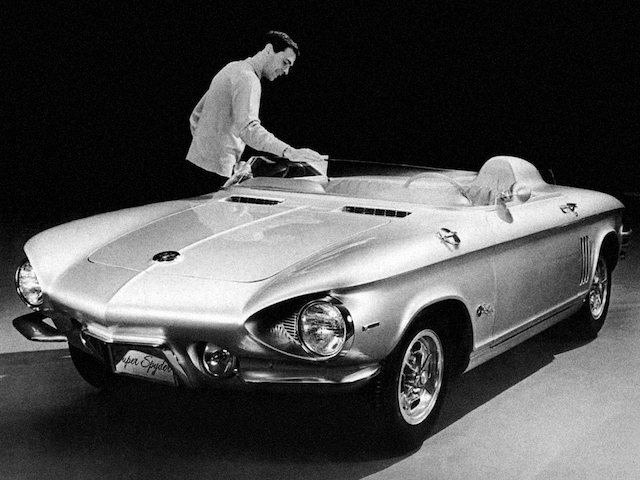 The 1962 Corvair Super Spyder.
The 1962 Corvair Super Spyder.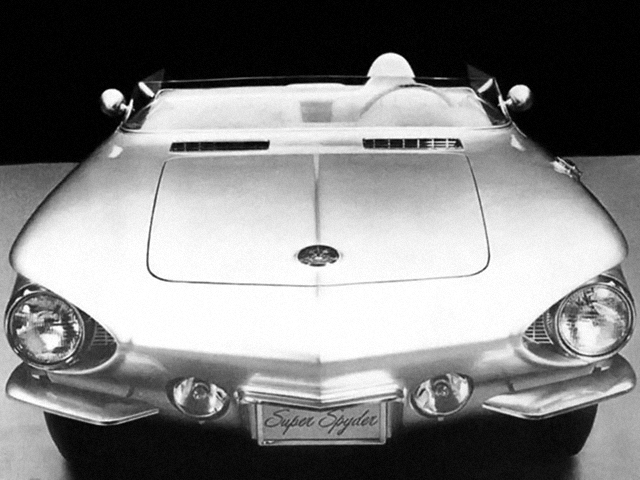 The Super Spyder gleamed in Bill Mitchell's favorite metallic silver.
The Super Spyder gleamed in Bill Mitchell's favorite metallic silver.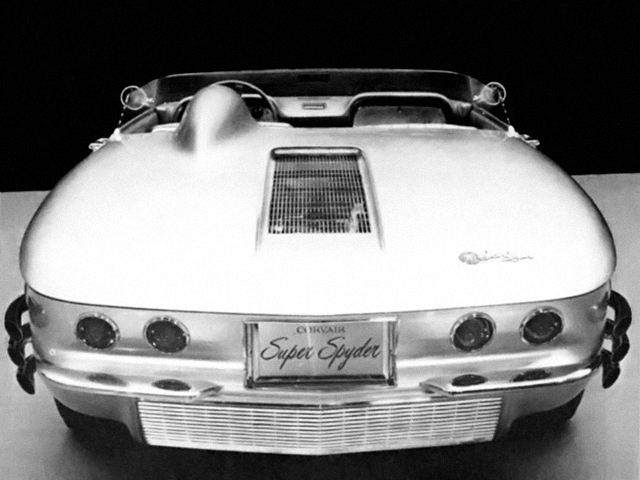 The rear view of the Super Spyder is wild with its triple exhaust pipes and Sting Ray taillights.
The rear view of the Super Spyder is wild with its triple exhaust pipes and Sting Ray taillights.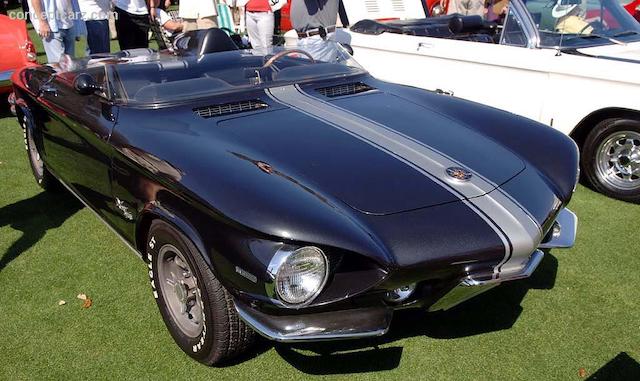 The 1962 Corvair Super Spyder as it appears today.
The 1962 Corvair Super Spyder as it appears today.
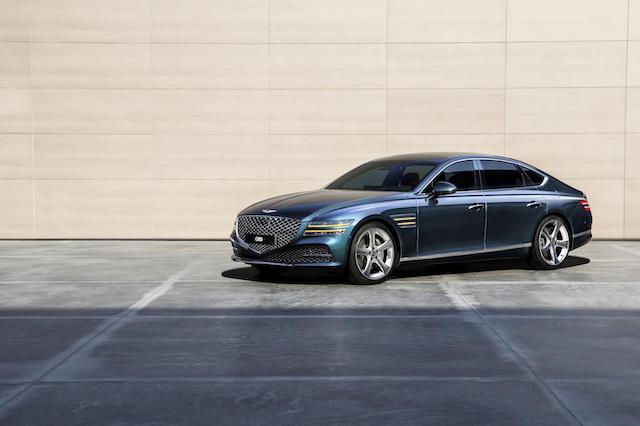
(Genesis images)
The all-new Genesis G80 represents the third generation of the brand’s executive sedan. Pushing the idea of "athletic elegance elevated," according to Genesis PR minions, the G80's platform represents a brand-exclusive, third-generation, rear-wheel drive platform with a design that "lowers the body and the center of gravity to secure a wider cabin and improved driving stability." The use of lighter weight materials was a distinct focus for the new Genesis. Aluminum is used for about 19 percent of the body, reducing the weight by 243 lbs. compared to the previous one. There will be two powertrains for the U.S. market: a 2.5-liter turbocharged Inline-4 with 300HP @ 5,800 rpm and 311 lb.-ft. of torque from 1,650 – 4,000 rpm; and a 3.5-liter turbocharged V6 with 375 HP @ 5,800 rpm and 391 lb.-ft. of torque from 1,300 – 4,500 rpm. The G80 arrives at U.S. dealers late this year.



(Honda images)
American Honda has confirmed that the unique ADV150 will be brought to the U.S. for the 2021 model year. Already a hit overseas, the model is an unlikely mix of scooter and adventure bike. Featuring a step-through design, substantial tires and robust Showa suspension, the ADV150 is a lightweight, compact scooter with adventure-ready features, a crossover model that embraces both daily commuting and recreation. The ADV150 will be available in June 2020, and priced at $4,299.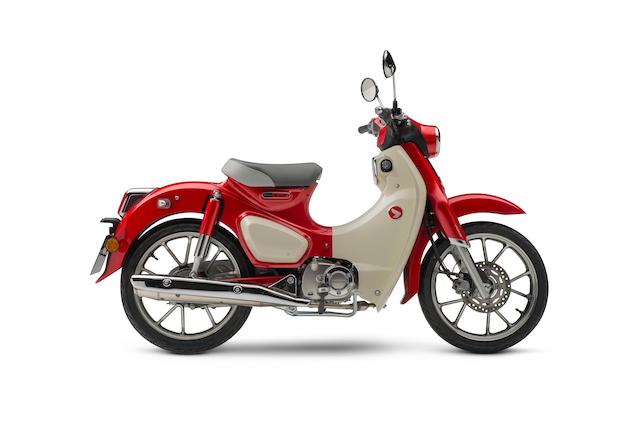 Since its 2018 U.S. return, the Honda Super Cub has won fans with its nostalgic look and friendly performance. For 2021, the highest-selling motor vehicle of all time is back for more, proving that "even 65 years after its debut, you still meet the nicest people on a Honda," according to Honda PR minions. The Honda Super Cub will be priced at $3,749 and also available in June.
Since its 2018 U.S. return, the Honda Super Cub has won fans with its nostalgic look and friendly performance. For 2021, the highest-selling motor vehicle of all time is back for more, proving that "even 65 years after its debut, you still meet the nicest people on a Honda," according to Honda PR minions. The Honda Super Cub will be priced at $3,749 and also available in June.

(Audi)
The Audi RS 3 will now be available in a special Nardo edition, which is arriving at dealerships now. The special edition RS 3 can reach an electronically-limited top speed of 174 mph, 19 mph higher than the standard RS 3. The standard RS fixed sport suspension allows for increased agility and enhanced cornering capabilities on and off the track, according to Audi. The RS 3 is equipped with a 2.5-liter TFSI® turbocharged engine that produces 394HP and 354 lb-ft of torque. A Sport exhaust system with black tips is also standard on the RS 3 Nardo edition. The RS 3 Nardo edition features Nardo Gray exterior paint with Black Optic exterior trim, staggered 19-inch 5-arm-blade design wheels in bi-color black finish, red brake calipers, a black rear lip spoiler, exterior mirror housings in gloss black, and black Audi rings and badges. The design selection interior includes RS embroidered floor mats, Alcantara® (!!!) knee pads with Crescendo Red stitching, Crescendo Red air vents and accent rings and seat belts with red edges. Audi Sport® Carbon inlays can also be found throughout the interior. Other standard stuff? The Audi virtual cockpit, MMI® Navigation plus, and MMI® touch with handwriting-recognition technology, Specific to the RS 3 is a screen that displays information on tire pressure (when equipped with the Dynamic plus package), horsepower/torque and a G-meter. When in manual shift mode and when approaching the engine redline, the tachometer acts as a shift light and changes colors, prompting the driver to upshift via the steering wheel paddle or gear selector lever. The Audi RS 3 Nardo edition has an MSRP of $59,900 plus destination, but only 200 will be available in the U.S.
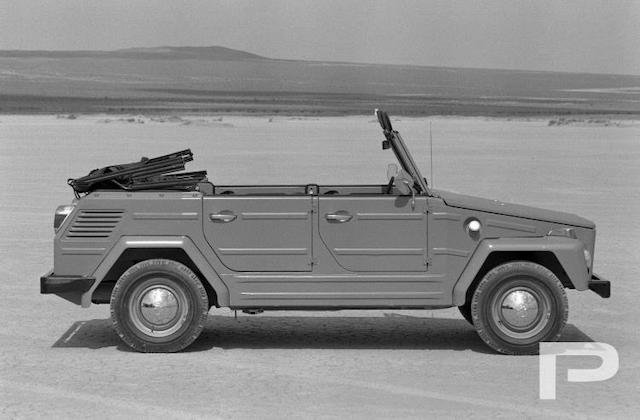
The following content and photos are © The Petersen Museum, and used with permission.
The first thing one might ask about this car is “what is it?” The simple answer is “it’s a Thing.” This was only true in the United States and Europe, however. In Mexico and South America, the simply shaped vehicle was known as the Safari, and in the United Kingdom it was sold as the Trekker. It was marketed in Italy as the Pescaccia (beastly fish).
Before it became a Thing, however, the vehicle was called the Type 181. The multi-purpose vehicle was developed for the West German military in the late 1960s based on the Type 182 Kübelwagen used during World War II. In fall 1969, Volkswagen began selling the Type 181 in Europe. Though the 181 was available as a consumer car, a large portion of the vehicles were purchased by NATO. Later, Volkswagen transferred production of the 181 from Germany to Mexico, giving it new territory in which to roam.
In 1973, Volkswagen unleashed the 181 as “The Thing” into the United States, the same year that the Arab Oil Embargo began. As the United States imported much of its oil from the Middle East, the Embargo greatly reduced the amount of oil available in the United States, which increased the price of gasoline and caused fuel shortages. The Embargo spurred the United States government to institute regulations designed to reduce the fuel consumption of commercial and consumer vehicles. In response, automobile companies like Ford began programs to design vehicles that were sleek, aerodynamic, and, therefore, fuel-efficient. The Thing was none of these things.
The Volkswagen had a simple, utilitarian profile. Its sloping hood was not shaped by the desire to funnel air with as little disruption as possible over the top of the car, but by the need to see over hilltops when climbing steep terrain. Its corrugated sides helped give the bodywork strength. The Thing’s doors were removable, as was the top. The windshield folded down. Yet, it was only advisable to utilize this feature if one wanted to make goggles mandatory driving attire, as John Lamm discovered during his road test of the car in the November 1973 issue of Motor Trend Magazine.
The average Thing was available in three colors, Pumpkin Orange, Sunshine Yellow, or Blizzard White. Just in case you couldn’t figure out what type of vehicle this was, an optional “The Thing” decal was also available. The Basic Thing came equipped with many things including rugged commercial style suspension, a “12-volt electrical tap,” and a front that looked disconcertingly like a back. This might have been because, the Thing, like the Volkswagen Beetle, had a rear mounted engine. Without an engine, the car’s front could be used to store essential items like a spare tire, the gas tank, and the Thing’s removable side curtains. On the dashboard there was little located beside the 12-volt electric plug. Like many other cars, the Thing had a steering wheel, a shifter, and a glovebox. The Thing’s glovebox, however, did not have a door. Only a radio was mounted to the right of the steering wheel. As Lamm observed, “the seats go along with the theme, stark, but practical.”
The heart of the beast was a 96.7 cubic-inch four-cylinder 46-horsepower engine from a Volkswagen Beetle. The Thing’s transmission was also from a Beetle, as was the chassis. In fact, the Thing and the Beetle had such similar layouts that Steve Smith wrote in the March 1973 issue of Motor Trend if “you just unfasten the 18 bolts per side you can physically swap bodies.” In an era of plush pickups, metalflaked customs, and psychedelic shag carpeted vans, the Thing offered intrepid owners a special kind of Spartan style. As suggested by its multiple monikers, the Thing was a hard vehicle to define. “It can’t be just a station wagon, a four-wheel drive pickup, or a dune buggy,” as Lamm noted, “so it walks a fine line in between.” This ambiguity nonetheless meant that with some alterations the Thing could become many other things.
With the addition of a hardtop, glass windows, upgraded floor mats, cabin insulation, a “good (read it loud) stereo,” and a powerful Porsche engine, the Thing could become “an all-purpose city-country car,” according to Lamm. With more luxurious upgrades the Thing, Lamm mused, could be transformed into “a modern 1930s phaeton." Motor Trend procured a Thing and transformed it into “an off-road and hunting vehicle,” outfitting it with upgraded suspension, horns, extra lights, brush guards, and new wheels and tires. The camo print camper also included extra accessories like “a winch, Citizen’s Band radio, a roll-cage, and extra gas tanks.”
Like the Jeep or Land Rover, the Thing could be driven on the street and through the brush. Like a corrugated metal dune buggy, the Thing could slide through the sand. It could be a roadster or converted to a hard top SUV. The multi-purpose vehicle could be a Wild Thing or a Mild Thing. Importantly, the Thing offered this range of functionality for $2750, a price almost $1000 lower than that of a Land Rover or Jeep at the time. Unlike dune buggies that were sold as conversion kits, the Thing was ready to hit the sand right from the dealer. So, when someone asks you what this car is, you really can say that it was “just the Thing.”

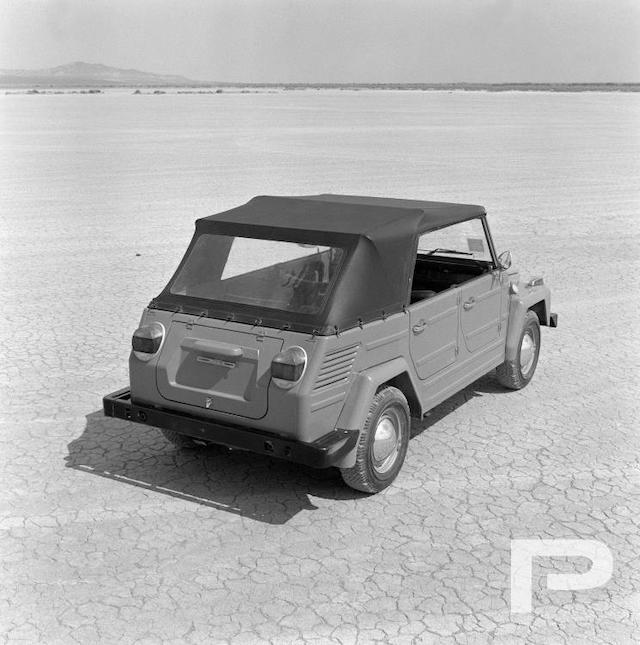
AE Song Lyrics of the Week:
Well I've been out walking
I don't do that much talking
These days, these days
These days I seem to think a lot
About the things that I forgot to do
And all the times I had the chance to
And I had a lover
It's so hard to risk another
These days, these days
Now if I seem to be afraid
To live the life I have made in song
Well it's just that I've been losing so long
I'll keep on moving, moving on
Things are bound to be improving
These days, one of these days
These days I sit on corner stones
And count the time in quarter tones to ten, my friend
Don't confront me with my failures, I had not forgotten them
"These Days" by Jackson Browne from the album "For Everyman" (1973).* Watch the video here.
*This sad, hurting song was originally written by Jackson Browne when he was just 16 years old in either 1964 or 1965. It appeared on a Browne demo in early 1967 under the title "I've Been Out Walking." Later in the same year it gained its first release when Andy Warhol's protégé Nico recorded it on her Chelsea Girl album, with Browne playing acoustic guitar. Other artists covered it over the following few years, including the Nitty Gritty Junk Band on their Rare Junk album and Tom Rush on his 1970 self-titled set. Browne himself recorded the song on his 1973 For Everyman LP, with an arrangement written by Gregg Allman (who also covered it around the same time on his Laid Back debut solo set). Browne's version differed from Nico's both in style and lyrics. In the latter case several lines were changed or omitted, such as a couple of lyrics about "rambling" and "gambling." This song has continued to be covered by a number of acts including Fountains of Wayne who used it as the B-side of their 1999 single "Troubled Times." Nico's version featured in the 2001 film The Royal Tenebaums. Browne later recalled on KGSR Radio Austin that he'd forgotten that he'd licensed them to use this song. He explained: "This is one of those things that comes to you in the mail and you don't know what they're talking about and you simply give them their permission. You're sitting in the movie theater and there's this great moment when Gwyneth Paltrow is coming out of a bus or something like that. I'm thinking to myself, I used to play the guitar just like that. And then the voice comes on and it's Nico singing 'These Days,' which I played on." (Courtesy of songfacts.com)




